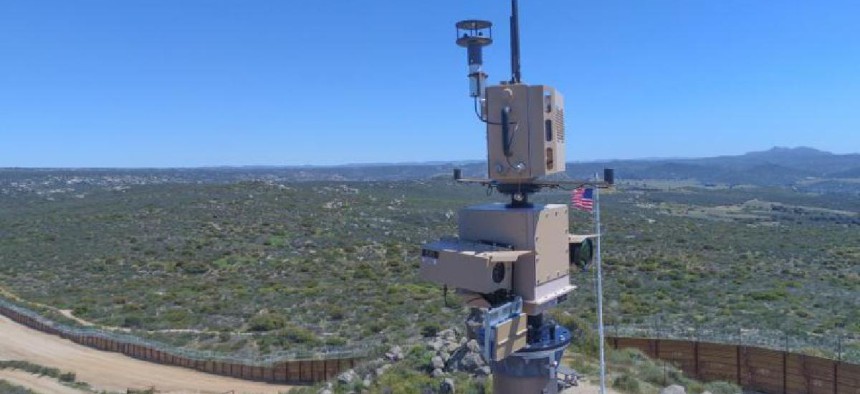CBP expands border surveillance tower network

Customs and Border Protection will add up to 200 autonomous surveillance towers.
Customs and Border Protection plans to deploy up to 200 autonomous surveillance towers along the Southern border with Mexico.
The towers will be supplied by contractor Anduril and are designed as solar-powered, unmanned intelligent sentinels for remote areas where grid power is not available.
The agency has been testing the technology for a couple of years. CBP tested four towers in the San Diego region in early 2018, and has bought 56 additional towers since, it said in its statement. Ultimately, CBP wants to procure and deploy 140 more in fiscal 2021 and 2022.
The towers are equipped with high performance, low-cost sensors, autonomy, artificial intelligence. They also have alternative energy sources and technology that can provide 24/7 situational awareness for Border Patrol agents.
Radar, motion sensors, cameras and other equipment alert border agents of activity without the agency having to devote continuous manpower to remote locations.
The autonomous towers, said CBP in a July 2 statement, have a small geographic footprint, which minimizes their installation impact on land owners and public lands. CBP agents can break down and set up the towers within two hours, providing front-line agents with a highly flexible, but technically capable, autonomous surveillance capability.
In a statement, a CBP spokesperson stressed the autonomous towers will supplement, not replace, existing Remote Video Surveillance System and Integrated Fixed Towers already in border sections in Arizona and Texas, as well as the physical border wall that has been a priority of the Trump administration.
In prepared testimony at a February appropriations hearing, acting DHS chief Chad Wolf said CBP was looking for a $28 million increase to support the rollout of 30 autonomous surveillance towers. Under questioning at the same hearing, Wolf said the plan called for the eventual deployment of 200 such towers.
Sen. Jon Tester (D-Mont.) spoke approvingly of the technological approach and questioned the necessity of a physical border wall.
"Because 10 or 20 years from now, there will be different challenges and you'll be able to change that technology to meet the 21st century challenges that a wall is not going to be able to meet," Tester said. "Mark my word, if I live long enough, there will be somebody standing in front of that wall, some president, that will say, 'Tear down this wall,' because it's much more effective utilizing technology, and it's a fact."
This article was first posted on FCW, a sibling site to GCN.





